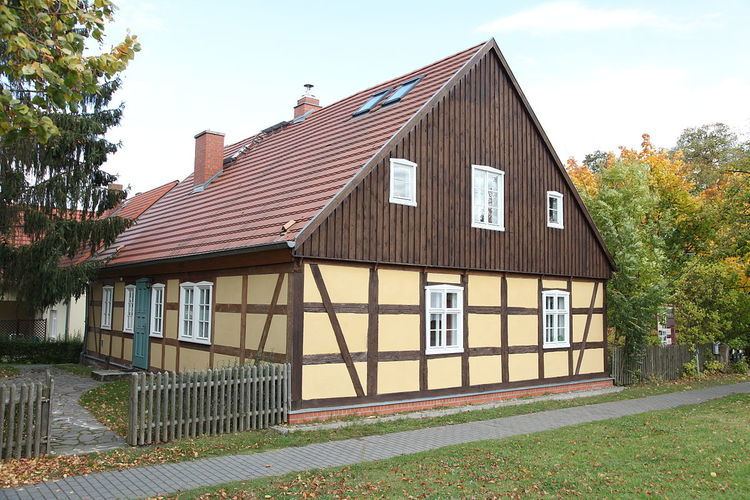 | ||
A Kötter, Köter, Köthner, Kötner, Kätner or Kotsassen, and especially in Prussia and Mecklenburg also Kossat(h)en, Kossater or Kossäten, was a villager in medieval Europe who lived in a simple dwelling known as a Kotten or Kate ("cottage"). The term is similar to the Scottish cotter and loosely translates as "cottager". The plural form is the same. The term Kötter is recorded in Germany from the 14th century.
The farmsteads of Kötter were generally sited on the edge of a village or were sub-divisions of an old farm. Because the return on their land was frequently insufficient to sustain their livelihood, they usually supplemented their income with a craft or trade, or by working as day labourers (Tagelöhner) on bigger farms or at manor houses. They usually had a plot of land of between an eighth and a half an oxgang (Hufe); they had few cattle and no more than one horse.
In most cases the cottage or Kate had a small vegetable garten that also provided a secondary source of income. Most Kätner had another main occupation. They were e. g. teachers, craftsmen or, if their land was sufficient, farmers. Their land was beyond the fields (Flur) allocated to the full-time farmers or Hufnern. The Kötter usually had a small share in the common land.
In the social agricultural hierarchy a Kötter ranked below the full-time farmer or Vollbauer, but above the Büdner, who just owned a house and garden and earned his living as a tradesman, and above the various categories of day labourer (the Inste and the Tagelöhner).
Around the middle of the 15th century, encouraged by a form of primogeniture known as the Anerbenrecht and by the rapid population growth, the Kötter were divided into Erbkötter and Markkötter. The former, who normally arose as a result of the division of land, always had a house and garden within the village, or within a farming community, something which was considered essential for reasons of protection and mutual assistance. Now, land that could be farmed, no matter how poor, was cleared elsewhere in the parish; often miles away from the village or nearest settlement, and in its middle a so-called Markkotten was built which was allocated to the Markkötter where he had to live. The Markkötter was not really given an inheritance proper and he ranked below the Erbkötter. Unlike the heirs or old farmers (Altbauern), none of this group inherited the family farm. Both groups of Kötter - the Erbkötter and Markkötter - were still higher in the social hierarchy than the Heuerling, who were, legally and economically, more dependant on the owners of their cottages.
